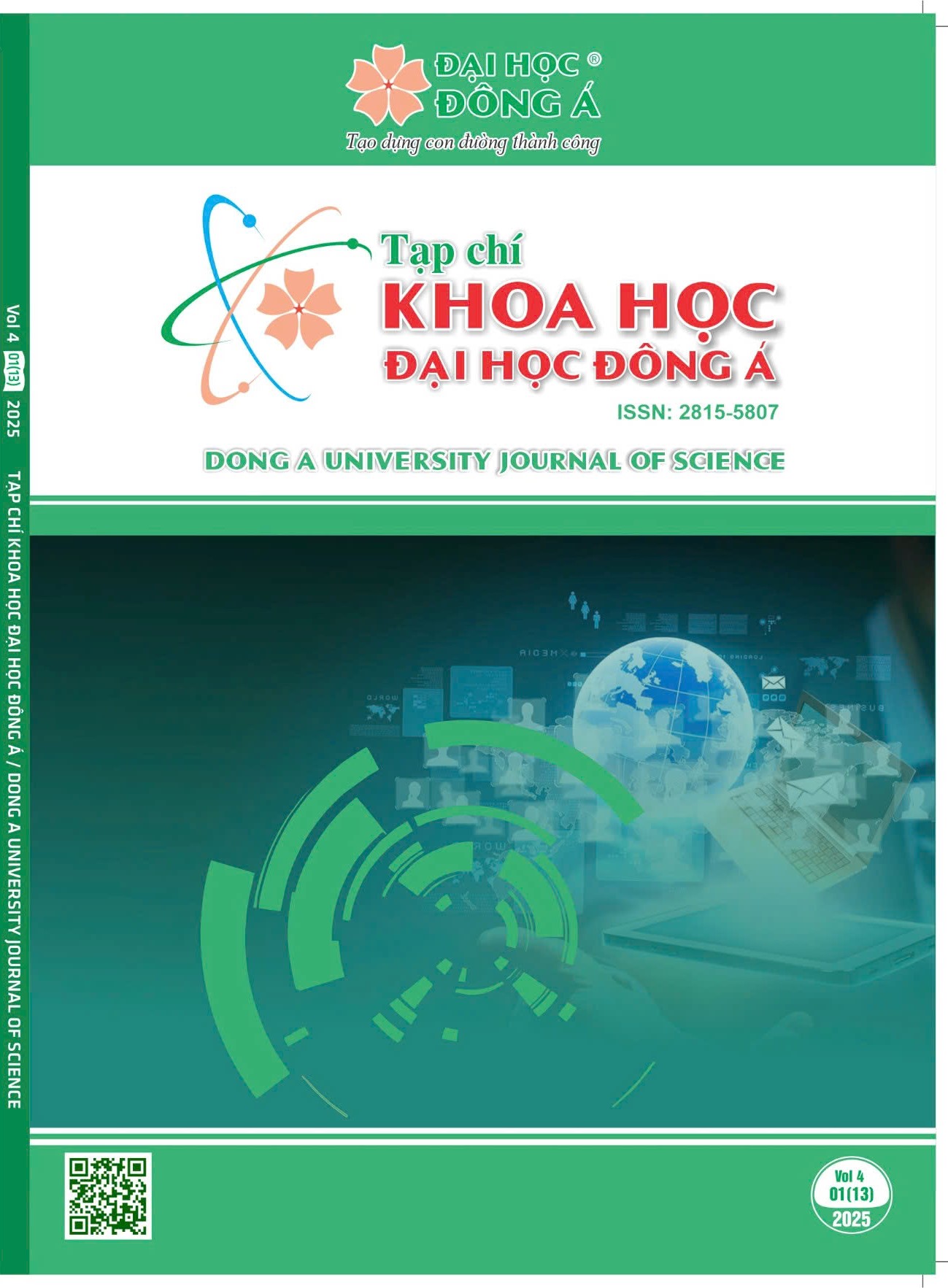Định vị Việt Nam như một điểm đến du học: Lợi ích, thách thức và cơ hội chiến lược
Nội dung chính của bài viết
Tóm tắt
Trong những năm gần đây, ngày càng có nhiều sinh viên từ các quốc gia phát triển lựa chọn du học tại các nước kém phát triển do nhu cầu trải nghiệm văn hóa mới, chi phí giáo dục hợp lý và cơ hội nghiên cứu độc đáo. Việt Nam có tiềm năng lớn để tận dụng xu hướng này thông qua việc nâng cao chất lượng giáo dục đại học, tăng cường hợp tác học thuật và cải thiện dịch vụ hỗ trợ sinh viên quốc tế. Bài viết này phân tích những lợi ích của việc thu hút sinh viên quốc tế, tập trung vào các khía cạnh kinh tế, học thuật và văn hóa. Đồng thời, tác giả cũng thảo luận về các chiến lược quan trọng mà Việt Nam có thể áp dụng để thu hút nhiều sinh viên quốc tế hơn, lấy bằng chứng từ các chính sách giáo dục thành công ở Trung Quốc và các quốc gia châu Á khác. Bằng cách đầu tư vào cơ sở hạ tầng nhà ở cho sinh viên, thiết lập quan hệ đối tác giữa trường đại học và doanh nghiệp, cũng như đơn giản hóa các quy trình hành chính, Việt Nam có thể gia tăng số lượng sinh viên quốc tế và nâng vị thế thành một điểm đến du học cạnh tranh và hấp dẫn đối với sinh viên trên toàn thế giới.
Chi tiết bài viết

This work is licensed under a Creative Commons Attribution-NonCommercial-NoDerivatives 4.0 International License.
Từ khóa
Du học, giáo dục, sinh viên quốc tế, quản lý giáo dục
Tài liệu tham khảo
Ammigan, R. (2019). “Institutional Satisfaction and Recommendation: What Really Matters to International Students?” Journal of International Students, 9(1), 262-281. https://doi.org/https://doi.org/10.32674/jis.v9i1.260
Beine, M., Noël, R., & Ragot, L. (2014). “Determinants of the international mobility of students”. Economics of Education Review, 41, 40-54. https://doi.org/https://doi.org/10.1016/j.econedurev.2014.03.003
DAAD. (2013). The Financial Impact of Cross-border Student Mobility on the Economy of the Host Country. In: German Academic Exchange Service.
Dwyer, M. M. (2004a). “Charting the impact of studying abroad”. International Educator, 13(1), 14.
Dwyer, M. M. (2004b). “More is better: The impact of study abroad program duration”. Frontiers: The Interdisciplinary Journal of Study Abroad, 10, 151-163.
Fakunle, O. (2021). “Developing a framework for international students’ rationales for studying abroad, beyond economic factors”. Policy Futures in Education, 19(6), 671-690.
Giang, M. (2024). “Vì sao 22.000 du học sinh nước ngoài chọn học tập ở Việt Nam?” tuoitre.vn. https://tuoitre.vn/vi-sao-22-000-du-hoc-sinh-nuoc-ngoai-chon-hoc-tap-o-viet-nam-20241025083741677.htm
Guardian, T. (2015). “UK students increasingly opting to study abroad”. https://www.theguardian.com/education/2015/may/28/study-abroad-uk-students-overseas#:~:text=The%20country%20students%20would%20most,time%20abroad%20while%20at%20university.
IIE. (2020). Economic Impact of International Students. Institute of International Education, USA. https://www.iie.org/research-initiatives/open-doors/economic-impact-of-international-students/
Kim Khanh, M. T., & Ngoc, C. H. (2022). “Attracting international students to a developing Asian country: Push–pull factors for a niche market, the case of a Vietnamese higher education institution”. Policy Futures in Education, 21(4), 445-464. https://doi.org/10.1177/14782103221134186
Manning, M. (2023). “US survey finds 72% interested in studying abroad”. thepienews.com. https://thepienews.com/terra-dotta-survey-finds-interest-in-study-abroad-may-surpass-2019-figures/
Monitor, I. (2024). “Southeast Asian students increasingly considering ‘studying abroad’ closer to home”. https://monitor.icef.com/2024/02/southeast-asian-students-increasingly-considering-studying-abroad-closer-to-home/
Mudassir, H., & Hong, S. (2019). “A Study on Academic Adaptation of International Students in China’. Higher Education Studies, 9(4). https://doi.org/10.5539/hes.v9n4p80
NAFSA. (2022). “Independent Research Measuring the Impact of Study Abroad”. In: Association of International Educators.
NAFSA. (2023). “Trends in U.S. Study Abroad”. Association of International Educators, USA.
Nguyen, T. (2022). “Exploiting Ideology and Making Higher Education Serve Vietnam’s Authoritarian Regime”. Communist and Post-Communist Studies, 55(4), 83-104. https://doi.org/10.1525/cpcs.2022.1819231
Nguyen, T. V., Ho-Le, T. P., & Le, U. V. (2017). “International collaboration in scientific research in Vietnam: an analysis of patterns and impact”. Scientometrics, 110(2), 1035-1051. https://doi.org/10.1007/s11192-016-2201-1
Qadeer, T., Javed, M. K., Manzoor, A., Wu, M., & Zaman, S. I. (2021). “The Experience of International Students and Institutional Recommendations: A Comparison Between the Students From the Developing and Developed Regions”. Front Psychol, 12, 667230. https://doi.org/10.3389/fpsyg.2021.667230
Quan, N. K., & Taylor-Robinson, A. W. (2023). “Vietnam’s Evolving Healthcare System: Notable Successes and Significant Challenges”. Cureus, 15(6), e40414. https://doi.org/10.7759/cureus.40414
Quyen, M. (2022). “Trường ĐH nào ở Việt Nam thu hút hàng ngàn sinh viên đến từ 74 quốc gia?” https://thanhnien.vn/truong-dh-nao-o-viet-nam-thu-hut-hang-ngan-sinh-vien-den-tu-74-quoc-gia-1851490129.htm
Sawir, E. (2013). “Internationalisation of higher education curriculum: the contribution of international students”. Globalisation, Societies and Education, 11(3), 359-378. https://doi.org/10.1080/14767724.2012.750477
Snodin, N. (2019). “Mobility experiences of international students in Thai higher education”. International Journal of Educational Management, 33(7), 1653-1669. https://doi.org/10.1108/IJEM-07-2018-0206
Vu, T., & Nguyen, T. (2022). “Doi Moi” but Not “Doi Mau”: Vietnam’s Red Crony Capitalism in Historical Perspective. In N. Truong & T. Vu (Eds.), The Dragon’s Underbelly: Dynamics and Dilemmas in Vietnam’s Economy and Politics (pp. 25-50). ISEAS–Yusof Ishak Institute.
Vu, T., & Nguyen, T. (2024). “Vietnam in the Reform Era”. In P. Asselin (Ed.), The Cambridge History of the Vietnam War: Volume 3: Endings and Aftermaths (Vol. 3, pp. 353-379). Cambridge University Press. https://doi.org/DOI: 10.1017/9781316225288.020
VUFO. (2023). “22.000 người nước ngoài đang học tập tại Việt Nam”. Vietnam Union of Friendship Organizations. https://vufo.org.vn/22000-nguoi-nuoc-ngoai-dang-hoc-tap-tai-Viet-Nam-65-101958.html?lang=vn
Wen, W., Hu, D., & Hao, J. (2018). “International students’ experiences in China: Does the planned reverse mobility work?”. International Journal of Educational Development, 61, 204-212. https://doi.org/https://doi.org/10.1016/j.ijedudev.2017.03.004


